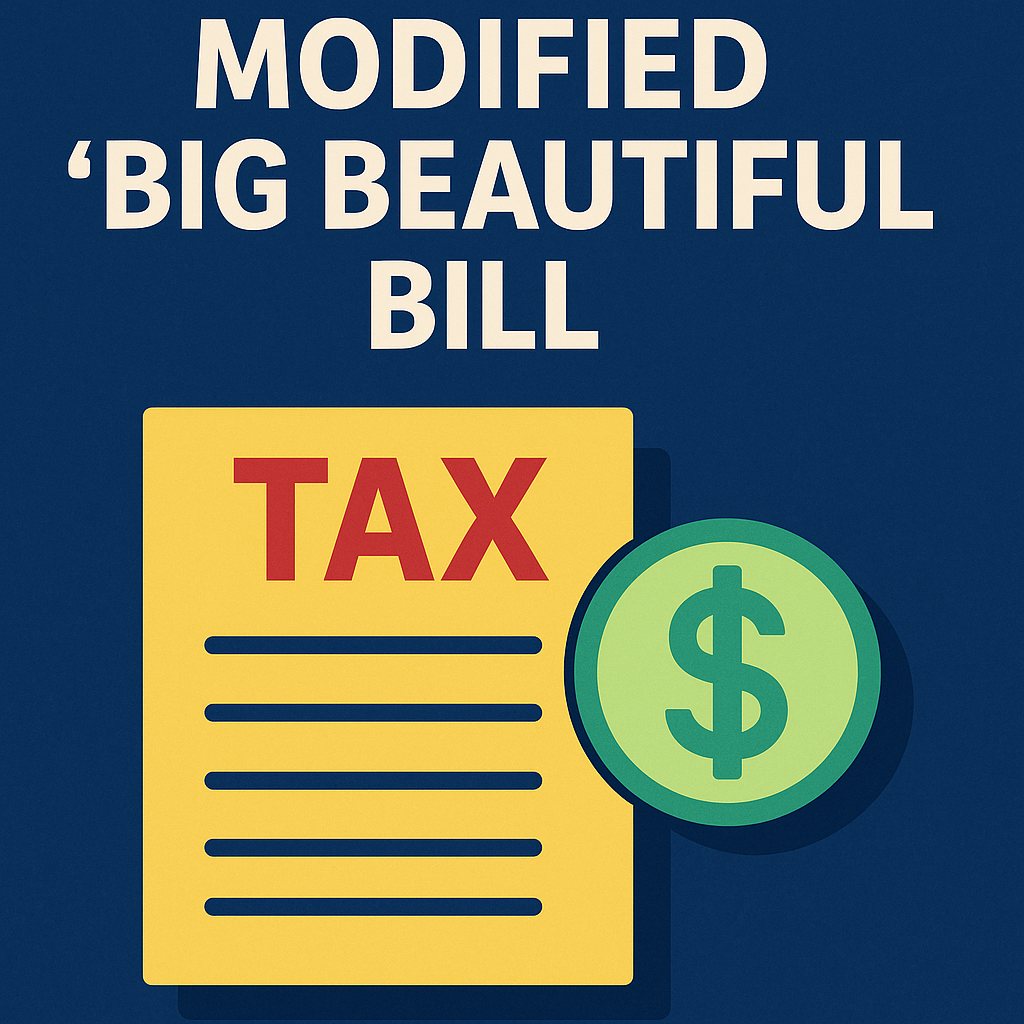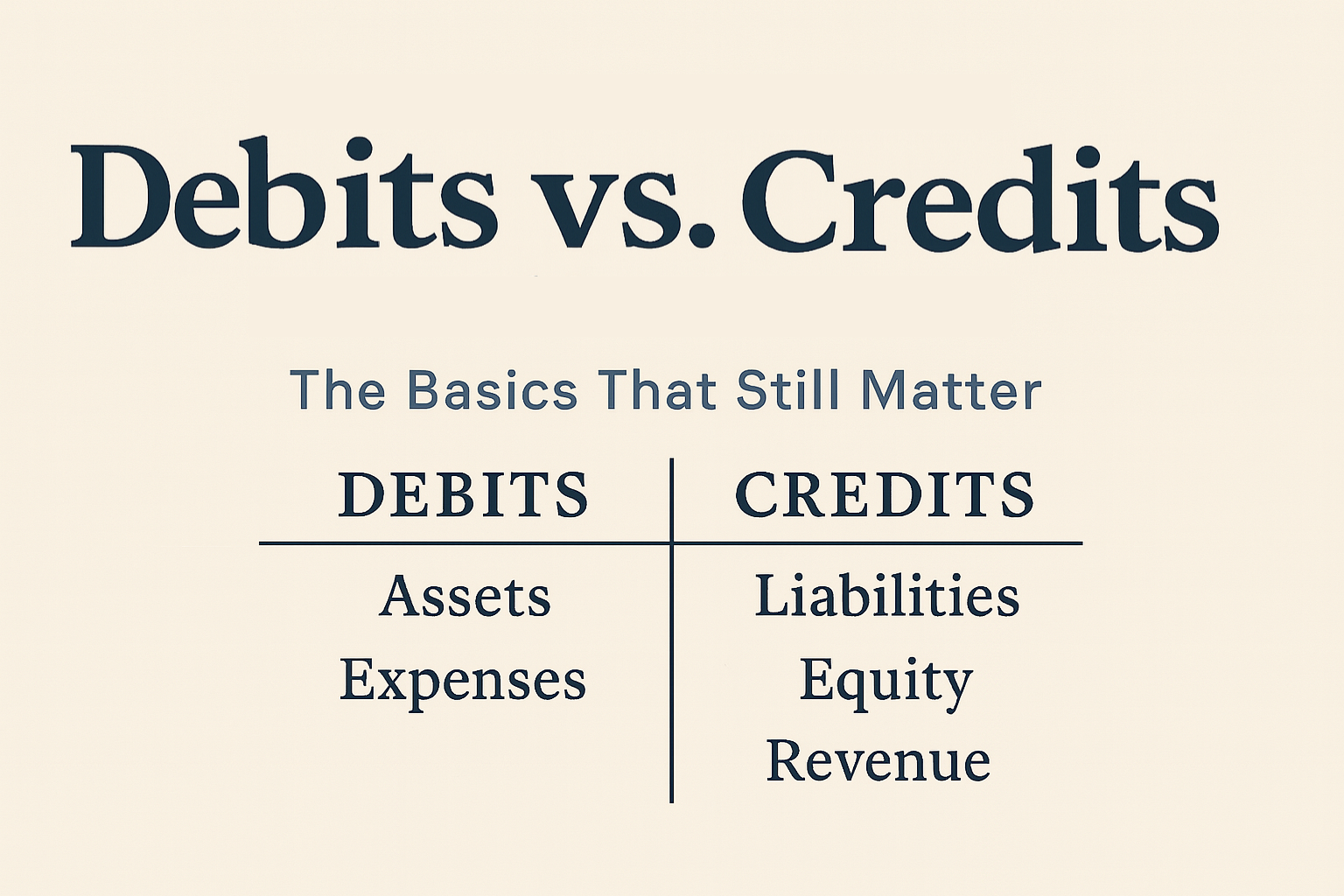Your cart is currently empty!

This new legislative bill, passed by the Senate on July 1 (legislative day, June 30), 2025, and titled “An Act to provide for reconciliation pursuant to title II of H. Con. Res. 14,” introduces a wide array of significant tax changes impacting individuals, families, and businesses across various sectors, with a clear emphasis on “America-First” policies. The comprehensive amendments span from individual tax relief to extensive corporate and energy-related tax reforms, alongside investments in communities.
For those who like to read the full bill, I’ve attached the text in its entirety here:
For those who enjoy podcasts as well, I’ve embedded a breakdown that you can listen to below:
Here’s an overview of the key tax changes in this bill:
Significant Tax Relief for Individuals and Families
The bill aims to provide permanent tax relief and enhance various benefits for middle-class families and workers.
- Income Tax Rates: The bill extends and enhances reduced income tax rates, making them permanent for taxable years beginning after December 31, 2025. Inflation adjustments for these brackets have also been modified.
- Standard Deduction: The increased standard deduction amounts are extended and enhanced permanently for taxable years beginning after December 31, 2024. For example, the married filing jointly standard deduction increases from $25,100 to $31,500 (using 2025 as the base year for inflation) and the single standard deduction increases from $12,550 to $15,750.
- Child Tax Credit: The bill extends and enhances the increased child tax credit, raising the maximum amount to $2,200 per qualifying child (from $2,000) for taxable years beginning after December 31, 2024. The refundable portion remains at $1,400.
- Personal Exemptions: The deduction for personal exemptions is largely terminated, except for a temporary senior deduction. For taxable years beginning before January 1, 2029, a $6,000 deduction is allowed for each qualified individual over 65 years of age, subject to an Adjusted Gross Income (AGI) phase-out.
- New Middle-Class Tax Relief:
- No Tax on Tips: A new deduction is introduced for qualified tips, allowing individuals to deduct tips up to certain limits ($2,500 for single filers, $5,000 for joint filers) with an AGI phase-out. This deduction is also allowed for non-itemizers. The bill also expands the tip credit to beauty services. However, this deduction terminates after December 31, 2028.
- No Tax on Overtime: A new deduction is allowed for qualified overtime compensation, up to $4,000 for single filers and $8,000 for joint filers, subject to an AGI phase-out. This deduction also applies to non-itemizers. This deduction terminates after December 31, 2028.
- No Tax on Car Loan Interest: Special rules are introduced for taxable years 2025 through 2028 to allow a deduction for qualified passenger vehicle loan interest, with a maximum of $7,500. This deduction is also available to non-itemizers.
- Student Loan and ABLE Account Enhancements:
- The exclusion from gross income for employer payments of student loans is made permanent.
- The exclusion from gross income for student loans discharged due to death or disability is extended and modified [16, 31, 32].
- ABLE account contribution limits are increased and enhanced, and rollovers from qualified tuition programs to ABLE accounts are permitted indefinitely [33-36].
- The Savers Credit is extended and enhanced for ABLE contributions, increasing the credit amount from $2,000 to $2,100 [33, 35, 37].
- State and Local Tax (SALT) Deduction: The limitation on individual deductions for certain state and local taxes is modified, introducing a temporary increase in the limit and a phasedown based on AGI for 2026-2029, before reverting to $10,000 after 2029 [16, 32, 38, 39].
Boosting American Business and Job Creation
The bill includes substantial reforms aimed at providing certainty and competitiveness for American job creators [3].
- Full Expensing for Business Property: The provision for 100% full expensing for certain business property is made permanent, removing previous sunset clauses. This applies to property acquired after January 19, 2025 [3, 40-42].
- Full Expensing of Domestic Research and Experimental Expenditures: A new provision allows for the immediate deduction of domestic research and experimental expenditures. Section 174 is specifically modified to apply to foreign research expenditures. This applies to amounts paid or incurred in taxable years beginning after December 31, 2024 [3, 43-45].
- Business Interest Limitation (Section 163(j)): The 30% adjusted taxable income limitation on business interest deductions is made permanent, removing the previous sunset. Rules for floor plan financing are also expanded to include certain trailers and campers [3, 46]. This applies to taxable years beginning after December 31, 2025 [47].
- Increased Section 179 Expensing: The dollar limitations for expensing certain depreciable business assets under Section 179 are increased to $2,500,000 (from $1,000,000), with the phase-out threshold rising to $4,000,000 (from $2,500,000). These changes apply to property placed in service in taxable years beginning after December 31, 2024 [48-50].
- Qualified Small Business Stock (QSBS) Gain Exclusion: The bill introduces a phased increase in the exclusion for QSBS gain, reaching 100% for stock held for 5 years or more, with intermediate percentages for 3 and 4 years. The per-issuer limitation is also increased to $15,000,000 (with inflation adjustment), and the aggregate gross assets limitation for qualified small businesses is raised from $50,000,000 to $75,000,000 [51-58].
- Information Reporting Thresholds (1099-K, 1099-MISC/NEC):
- The de minimis rules for third-party network transactions (1099-K) are reinstated to the higher thresholds of $20,000 and 200 transactions, effectively reversing the previous lower limits. This change is retroactive as if included in the American Rescue Plan Act of 2021 [51, 58, 59].
- The general threshold for information reporting (e.g., 1099-MISC/NEC) under Section 6041(a) is increased from $600 to $2,000, with inflation adjustments for future years. This applies to payments made after December 31, 2025 [51, 60, 61].
- Advanced Manufacturing Investment Credit: The credit under Section 48D for advanced manufacturing investments is enhanced from 25% to 35%, applicable to property placed in service after December 31, 2025 [48, 62].
- Spaceports: Spaceports are now treated like airports for the purposes of exempt facility bond rules, easing financing for such infrastructure [48, 62-64].
Ending Green New Deal Spending and Promoting America-First Energy
A significant focus of the bill is on terminating or restricting various “clean energy” subsidies and enhancing traditional energy sector provisions [5].
- Termination of Clean Energy Credits:
- Previously-Owned Clean Vehicle Credit (25E): Terminates after September 30, 2025 [5, 65].
- Clean Vehicle Credit (30D): Terminates for vehicles acquired after September 30, 2025 [5, 65].
- Qualified Commercial Clean Vehicles Credit (45W): Terminates after September 30, 2025 [5, 66].
- Alternative Fuel Vehicle Refueling Property Credit (30C): Terminates after June 30, 2026 [5, 66].
- Energy Efficient Home Improvement Credit (25C): Terminates for property placed in service after December 31, 2025 [5, 67].
- Residential Clean Energy Credit (25D): Terminates for expenditures made after December 31, 2025 [5, 67].
- Energy Efficient Commercial Buildings Deduction (179D): Terminates for construction beginning after June 30, 2026 [5, 68].
- New Energy Efficient Home Credit (45L): Terminates after June 30, 2026 [68, 69].
- Clean Hydrogen Production Credit (45V): Terminates after January 1, 2028 [69, 70].
- Clean Electricity Production Credit (45Y) and Investment Credit (48E): These credits are terminated for wind and solar facilities after specific dates (12 months after enactment for production credit, December 31, 2027, for investment credit) [69-74].
- Restrictions on Foreign Entities in Energy Credits: New rules introduce restrictions related to “prohibited foreign entities” (defined as specified foreign entities or foreign-influenced entities) for credits such as the Zero-Emission Nuclear Power Production Credit (45U), Clean Electricity Production Credit (45Y), Clean Electricity Investment Credit (48E), Advanced Manufacturing Production Credit (45X), Clean Fuel Production Credit (45Z), and Carbon Oxide Sequestration Credit (45Q) [69, 71, 72, 74-80]. These restrictions generally apply to facilities/property where construction begins after December 31, 2025, or taxable years beginning after enactment [73, 80].
- Enhancement of America-First Energy Policy:
- Clean Fuel Production Credit (45Z): Modified to include a prohibition on foreign feedstocks, requiring fuels to be derived exclusively from feedstock produced or grown in the United States, Mexico, or Canada [69, 81, 82]. The credit also introduces a prohibition on negative emission rates for most fuels (meaning the emissions rate cannot be less than zero), but makes an exception for fuel derived from animal manure, which can have an emissions rate less than zero [69, 82-84]. This credit is extended to December 31, 2029 [69, 84].
- Carbon Oxide Sequestration Credit (45Q): Modified to provide parity for different uses and utilizations of qualified carbon oxide, simplifying the credit structure and applicable dollar amounts [69, 85-87].
- Intangible Drilling and Development Costs (IDCs): These costs are now explicitly taken into account for purposes of computing adjusted financial statement income under the Corporate Alternative Minimum Tax (CAMT) [69, 88]. This applies to taxable years beginning after December 31, 2025 [89].
- Publicly Traded Partnerships (PTPs): Income derived from hydrogen storage, carbon capture, advanced nuclear, hydropower, and geothermal energy are added to the list of qualifying income for PTPs, allowing more energy-related businesses to operate as PTPs [71, 89, 90]. This applies to taxable years beginning after December 31, 2025 [90].
International Tax Reforms
The bill also enacts several changes to international tax rules, generally applicable to taxable years beginning after December 31, 2025 [91].
- Foreign Tax Credit (FTC) Limitation: Rules for the allocation of certain deductions to foreign source net CFC tested income are modified [64, 92, 93].
- Deemed Paid Credit for Tested Income: The deemed paid credit under Section 960(d)(1) is increased from 80% to 90% [92, 94].
- Sourcing of Inventory Income: Certain income from the sale of inventory produced in the United States and sold outside the United States may be treated as foreign source income [92, 95, 96].
- Foreign-Derived Deduction Eligible Income (FDII) and Net CFC Tested Income (GILTI): The deduction rates for FDII are modified, and the concept of “Global Intangible Low-Taxed Income” (GILTI) is renamed and restructured as “Net CFC Tested Income,” with the repeal of the tax-free deemed return on foreign investments [92, 97-100].
- Base Erosion Minimum Tax (BEAT): The BEAT rate is increased from 10% to 10.5% [91, 101].
- Look-thru Rule for Related Controlled Foreign Corporations (CFCs): This rule, which allows certain intercompany payments between related CFCs to be excluded from Subpart F income, is made permanent [91, 102].
- Downward Attribution of Stock Ownership: Limitations on downward attribution of stock ownership in applying constructive ownership rules are restored [4, 103].
Investments in Community Development and Small Businesses
The bill includes provisions designed to foster investment and development in American communities and support small businesses [4, 51].
- Opportunity Zones (OZs): The program is given permanent renewal and enhancement. This includes decennial designations of qualified opportunity zones, modifications to eligibility for “low-income communities” to include areas with high poverty or unemployment, and changes to the deferral rules, including a new “qualified rural opportunity fund” designation with enhanced basis increases [104-109]. Enhanced reporting requirements for qualified opportunity funds are also introduced [51, 110, 111].
- Low-Income Housing Tax Credit (LIHTC): The State Housing Credit Ceiling is permanently increased [104, 112].
- New Markets Tax Credit (NMTC): The NMTC is permanently extended, removing its previous sunset [104, 113, 114].
- Charitable Contribution Deductions:
- The partial deduction for charitable contributions by non-itemizers is permanently reinstated and expanded, increasing the maximum deduction amount [104, 114, 115].
- New floors are introduced for individual (0.5%) and corporate (1%) charitable contributions based on adjusted gross income and taxable income, respectively [104, 115-118].
- Rural and Agricultural Property: An exclusion from gross income for 25% of interest received on loans secured by rural or agricultural real property is introduced for qualified lenders [5, 119, 120]. An election is also provided to pay capital gains tax in installments from the sale of qualified farmland property to qualified farmers [5, 121, 122].
These tax changes represent a significant legislative effort, aiming to reshape the U.S. tax landscape with a focus on long-term relief for various taxpayers and strategic investments in domestic industries.
Let’s connect
Join the fun!
Stay updated with our latest tutorials and ideas by joining our newsletter.



Leave a Reply